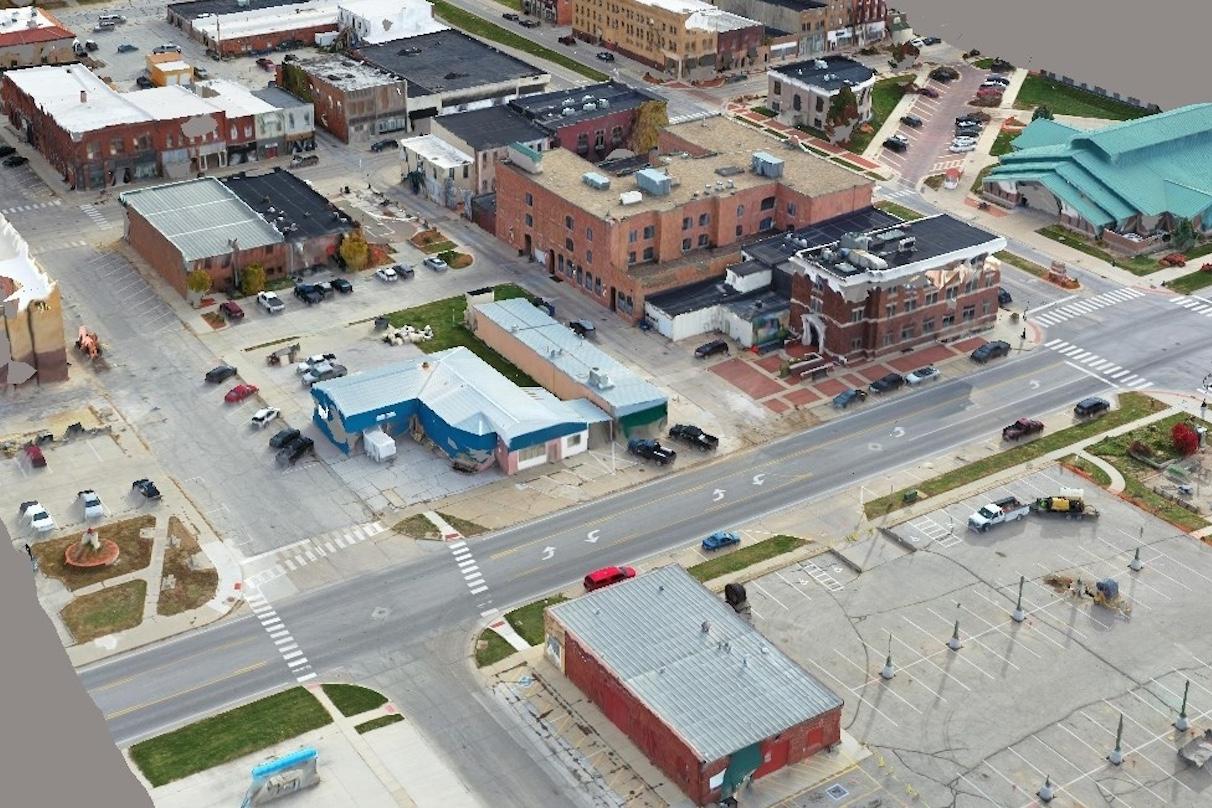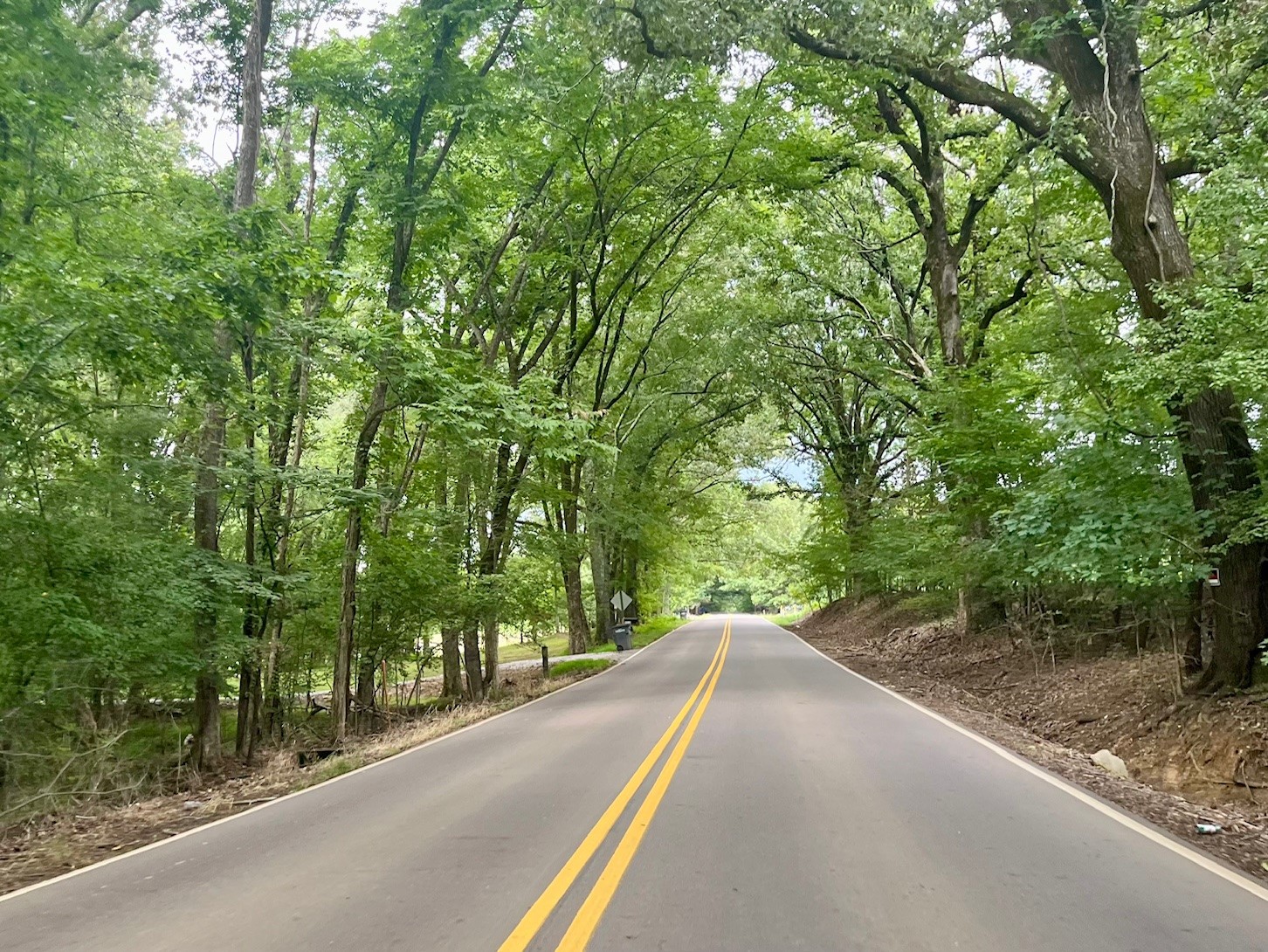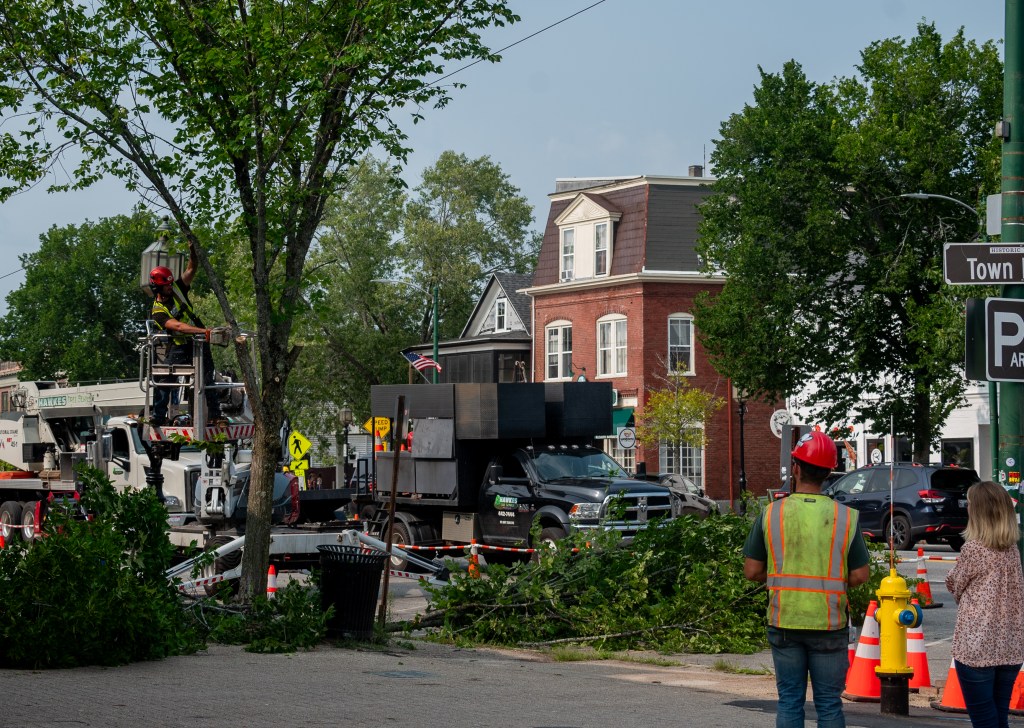
A city-sized digital twin of Perry, Iowa, created by the engineering firm Foth using Bentley Systems software to process 375,788 images and 4.1 terabytes of information. (Image courtesy of Foth.)
Artificial intelligence (AI) could go a long way in supporting trees and vegetation in cities. Trees have long been associated with sustainability and climate change mitigation, but as the climate has moved into crisis mode, trees are an essential part of adaptation.
Their shade lowers ambient air and surface temperatures, reducing the intensity of urban heat islands. Their leaves release moisture that cools the air as it evaporates. And their canopies reduce the rate at which rainwater reaches the ground, while their roots allow for better absorption than soil alone, reducing the likelihood and intensity of flooding. AI can strengthen the ability of trees to help with climate adaptation and support sustainability in the process.
Companies are already using AI in nature. Technology company IBM is using it to support Kenya’s reforestation efforts using data from NASA satellites. Likewise, infrastructure engineering software company Bentley Systems has a program that creates AI-powered digital twins of cities for municipal planning and infrastructure management, including green infrastructure like trees.
Digital twins are precise, virtual representations of real things that use real-time data to simulate the outcomes of possible scenarios. When combined with AI, they can learn from the data they receive, providing better insights and predictions.
“We’re seeing the focus shift more and more from the sustainability angle – or I would say the net zero angle – to the resilience angle,” Rodrigo Fernandes, director of driving sustainable development goals at Bentley Systems, told TriplePundit. “We’re seeing more and more customers and users focusing on making sure our infrastructure is ready… to adapt and be resilient to the challenges we face in the future and present due to climate change.”
Climate change is putting greater pressure on all types of infrastructure, from bridges to roads to green spaces, he said. Digital twins help monitor and inspect each of these infrastructures to aid maintenance and planning. Municipalities can use them to create a digital map of the trees and vegetation in an area, a tech-enabled version of a process known as tree mapping.
The Singapore Land Authority is using the company’s digital twin software for exactly this purpose, mapping all of its infrastructure, including the exact number of trees and other green spaces, Fernandes said. This can be done via satellite data or by attaching sensors to cars, drones or, in Singapore’s case, aircraft.
“Our software (is used) to integrate the data, aggregate it and create the map,” he said. “They can easily quantify the square footage or the volume … (to) quantify their green infrastructure.”
These results are used to plan further green infrastructure projects, such as increasing shade, improving air quality, mitigating flooding, and more. Perry, Iowa, also uses a digital twin to manage its artificial infrastructure and green spaces, including projects to restore natural areas and reduce non-native species.
The software is also valuable for monitoring the health of existing trees. The AI can be trained to detect the health of trees based on the color of their leaves, Fernandes said. “In the case of Mendoza, Argentina, there were a million trees, so they applied the software to the entire tree infrastructure,” he said. “Then they can use it to define actionable decisions like proactive maintenance.”
For tree mapping using digital twins to be dramatically scaled up, a cultural shift is needed, says Fernandes. While city governments are aware of the need for a map in terms of sustainability and adaptation, they often have more pressing problems that need to be addressed first. Also, the availability of such technologies is not yet fully understood.
“They may think, ‘Okay, we need to plant more trees in a city at some point because we see the benefits of cooling, improving the quality of life, reducing air pollution and air quality and all that,'” he said. But “they’re just not aware that digital technologies make this possible.”
It remains to be seen whether municipalities will use such software on a large scale as part of sustainability and climate change mitigation.





